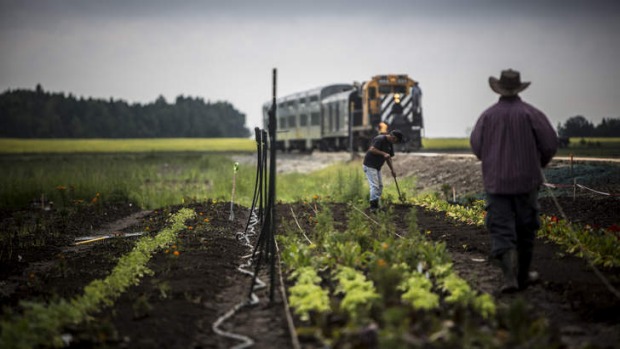
In Canada's beautiful Charlevoix region, Jill Dupleix takes a gastronomic train to the door of her hotel.
In 1982, a few young street performers staged an inventive new acrobatic performance set to live music at a street fair in their home town of Baie-Saint-Paul in Canada's Charlevoix region, north-east of Quebec. The rest is history, as Cirque du Soleil went on to win hearts all over the world with its creative, magical mix of dance, theatre, art, music and derring-do.
Twenty years later, one of those street performers, Daniel Gauthier, sold his share of the company and began investing heavily in his home region, turning his streetwise creativity to the task of regenerating its infrastructure and tourism. To this end, he bought a mountain, a farmhouse and a train.
The mountain was Le Massif de Charlevoix, perched high above the St Lawrence River and blessed with spectacular panoramas, tumbling rivers, abundant snowfalls, and a breathtaking 770-metre vertical run, the highest east of the Canadian Rockies.
The farmhouse was one of the largest wooden structures in Canada, a magnificent 100-year-old barn on the outskirts of Baie-St-Paul, but just as plans to transform it into a rustic hotel took shape, some local youths broke in and burnt the place to the ground. It must have been a severe setback, but Gauthier, well trained in picking himself up after a fall, immediately set about doing something entirely different. He presented his ideas to the people of the region, saying, "If you don't believe in my project, I won't do it". They believed, and he did it.
Today, he calls La Ferme his "anti-resort", although it is not clear why, when it is such a thoroughly modern, streamlined set of five pavilions with 145 rooms, its own performance theatre, vegetable gardens, spa and three dining options.
The rooms have every comfort, in spite of their almost Amish simplicity, and the public areas buzz with life. Nor is it arm-and-a-leg expensive. The $200 a night is a reasonable price to pay for a dramatic convergence of tradition and the contemporary.
Executive chef David Forbes loves it here too. "Food has to be anchored in something cultural," he says. "We have an incredible terroir in the Charlevoix, with very innovative producers."
His smart-casual Les Labours restaurant is the place for knockout breakfasts and hearty dinners of local duck, lamb, cheese, local salami, and even freshly tapped maple syrup that references the region's native people ("They taught us how to do it," he says).
And the train, you ask? La Ferme now has its very own, winding its way from Quebec City along the St Lawrence seaway and arriving right next to the hotel, just steps from the reception. Not only did Gauthier buy and restore the railway tracks for an estimated $C44 million ($45.5 million), but he then went shopping for carriages. Hence the string of high-top Chicago commuter carriages from the 1950s, now luxuriously fitted out with tables, kitchens, vast viewing windows, space for skis and sleds, and iPads that let you track the 2½-hour journey.
Sitting by the picture window nibbling at platters of locally produced salami and watching the blue velvet rockpools and saltwater haze of the St Lawrence seaway drift past is as entertaining as anything Cirque du Soleil could come up with. Cue applause.
The writer was a guest of the Canadian Tourism Commission.